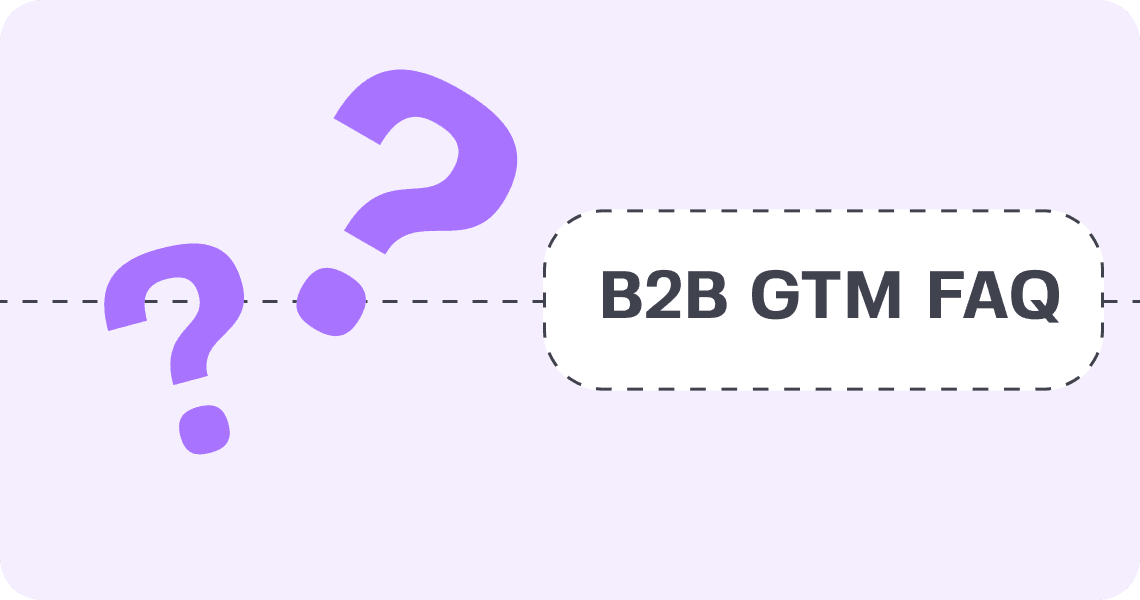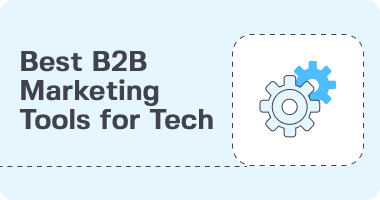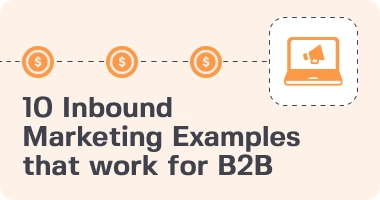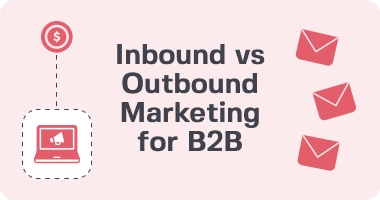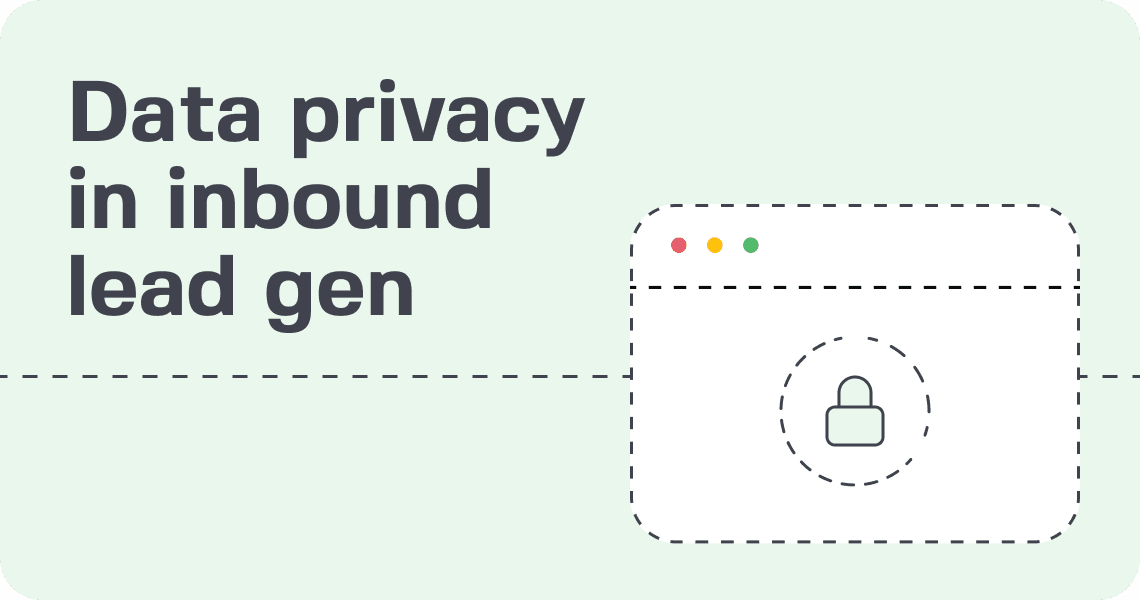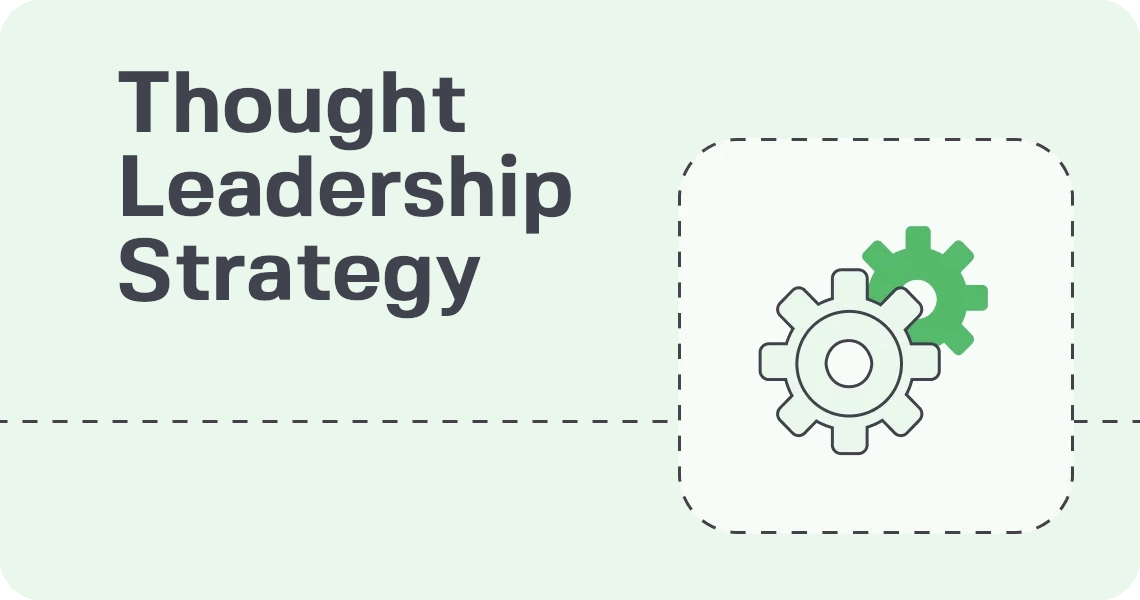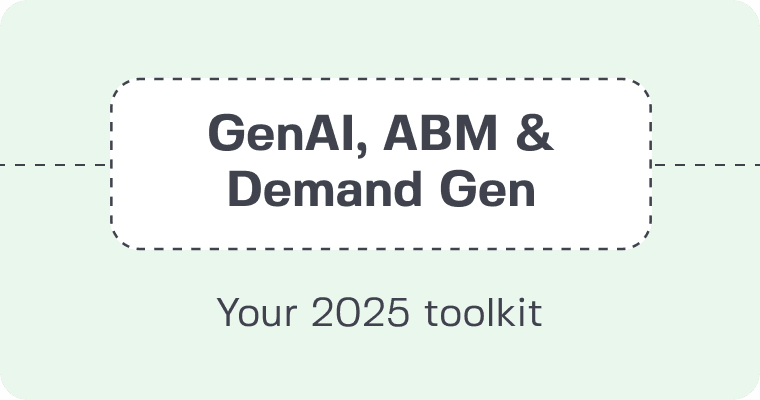As we step into 2024, the digital landscape continues to evolve at a rapid pace. Inbound demand is shifting between many channels, and AI is tweaking the buyer journey established by B2B professionals. As CMOs, to be effective in the face of this change, you need to adapt both your digital go-to-market (GTM) strategy and knowledge of changes in market trends. Here are some essential insights to ensure CMOs don’t feel lost as you chart your course for the year ahead.
Key 2023-2024 B2B market trends CMOs should bear in mind
As CMOs, being up-to-date with all the changes in the B2B market is a question of survival — both for your personal career and for the success of your business. And 2023 has not been a year easy on changes.
Let’s delve into the main trends that every CMO should have on their radar:
- Rethinking Priorities:
In 2023, we’ve observed a shift in priorities, with noncritical issues taking a back seat. This has resulted in reduced inbound demand for tech companies. In challenging times, companies tend to stick with well-established vendors or opt for the most cost-effective solutions. If your brand doesn’t fall into either category, convincing businesses to switch to your solution becomes more challenging.
- Extended Decision-Making Processes:
The process of making a decision is now even lengthier, with decision-making committees becoming more prominent amidst the recent turbulent economic conditions. As a result, you may need to persuade more individuals within a company to choose your product or service.
- Redefining the B2B Buyer’s Journey:
Emerging platforms like ChatGPT and Bard are becoming integral as part of the research phase, upending norms that we have come to associated with the B2B buyer’s journey. In fact, 75% of B2B buyers now use social media to research products and services before making a purchase.
Additionally, TikTok has emerged as a platform for awareness-level search, especially among Gen Z. For instance, 58% of Gen Z TikTok users turn to the platform to learn about new products or brands, while 60% have made purchases based on what they see on the platform.
- Preference for Immediate Answers:
Modern audiences no longer have the patience for lengthy website content. They seek immediate answers to their questions, favoring real-time, concrete conversations — even if they involve AI — over navigating through extensive text.
- Iterative Strategizing:
As marketers, we need to shift our approach from annual or biannual strategy reviews to ongoing iterations. This adaptability is essential to navigate the ever-changing market landscape effectively.
Why choosing and revising a GTM strategy is a must
Your digital GTM strategy serves as the foundation upon which all your digital marketing efforts are built. In line with all the market shifts described above, carefully choosing your GTM strategy, or revising it if you already have one, is no longer just an option — it’s a necessity.
Here’s why choosing or revising your GTM strategy is imperative in 2023 and beyond:
- Targeted Audience: You need a GTM strategy to identify and focus on the specific industries, companies, and decision-makers most likely to benefit from your products or services. This saves time and resources by directing your marketing and sales efforts to where they matter most.
- Complex Sales Cycles: In B2B, sales cycles are often longer and more intricate. A GTM strategy helps you map out each step, ensuring a clear plan for nurturing and converting leads over time.
- Customer Relationships: B2B customers value long-term relationships, which is why a solid GTM strategy must include customer retention and upselling tactics, focusing on delivering excellent value and support while adapting to changing needs. This leads to loyalty and recurring revenue.
- Product Positioning: Your B2B products or services may be complex, so communicating their unique benefits effectively is essential. A quality go-to-market solution can bring proper positioning for your solutions, addressing specific pain points and challenges in the best possible way.
- Distribution Optimization: B2B companies use various distribution channels. A GTM strategy helps you evaluate and optimize these channels for efficiency, ensuring your products or services reach your audience cost-effectively and in line with their preferences.
How to analyze market & ICPs for GTM creation/revision
Knowing that a GTM strategy is a must, choosing the right strategy and backing up your choice with data requires expertise. At 42DM, we have seen numerous companies choose the wrong strategy or simply have no clear strategy at all. Predictably they become disappointed in their ROI and results a few months later. Our motto is “Strategy is mandatory. Growth is inevitable.” That’s why we’ve developed a unique research and strategy framework that will help YOU, dear CMOs, become more data-driven in your decisions.
So, meet DM.Ideation — a 360-degree digital footprint research framework that will help you overcome challenges, get to know your market, and drive growth.
To analyze your market and ICPs with DM.Ideation, follow these steps, aided by the following questions:
- Market research
Where is the market going, and what will drive growth in the future?
- ICP & buyer persona
Who is the ideal customer, and how can you catch them?
- Media consumption & content field research
What channels should be focused on, and what are the core topics to cover in our content strategy?
- Competitor research
What are your competitors’ successes and blind spots?
- Performance analysis
What are the core performance blockers and how can they be overcome?
- Gap analysis
What are the implications & recommendations for 2024 and beyond?
What digital strategies can you choose from
With this information at your disposal, you can start building your digital strategy, which will generally fall into one of the following four categories:
- Demand Gen – This strategy is most relevant in markets where there is already a high demand for well-known brands. If you run a smaller business with less market share in this type of category, your goal is to stimulate interest in people who don’t know anything about you. Your challenge is to build brand awareness and connect with your ICP to capture as much of the existing demand as possible, converting it into opportunities and revenue.
- Inbound – In markets with low category demand and no dominant players, an inbound strategy excels. Here, the focus is on creating broadly engaging content that attracts, converts, and closes leads effectively and at scale.
- Account-Based – This strategy comes into play when there is little overall demand and the greatest opportunity is concentrated amongst a smaller number of high value customer prospects. In this situation, the key is to identify intent signals and match target accounts with your ICP to focus on leads that are ready to buy. Highly integrated marketing and sales efforts and highly personalized campaigns are critical to this success.
- Mixed strategy – In reality, one strategy may not fulfill all your go-to-market goals. You often need a mix of strategies. One of the above can act as the lead, but you can enhance it with elements from the others. For instance, you might lead with an inbound strategy and then employ an account-based approach for the upper end of your ICP.
How to choose a GTM strategy: a case study
Let’s see the advice above in practice. Recently, a lead generation platform has asked 42DM to help determine their GTM strategy, and implement it.
Our client is a self-serve lead generation platform & specific advertising tool that uses questionnaires to generate a base of high-motivated prospects.
Target geo is the US.
Challenges:
- low brand awareness compared to the competition
- foggy inbound demand (unclear intent behind keywords)
- competitive nature of the US market
Goals:
- Establish brand recognition within the pertinent audience, capturing their attention and subsequently converting that awareness into meaningful engagements
- Acquire at least 100 demo requests & 5 new customers (Advertisers) in 3 months of launching the new marketing strategy
To find the right GTM for our client, we followed the following structure:
- Analyze search volume for сompany’s target keywords
We identified top keywords that correlate with Client’s offering, and found that organic demand is currently limited and has yet to fully develop.
Considering that the average organic click-through rate (CTR) for non-branded queries is around 7%, the on-site content efforts to capture existing demand may not be cost-effective for lead generation purposes.
- Evaluate competitors branded keywords search volume
Then, we checked Client’s main competitors. Here is their traffic landscape:
As you can see, more than 84% of competitors’ organic traffic is branded. Competitors are focusing on brand demand generation through Organic & Paid Social, Ads, and PR marketing tactics to position themselves as industry leaders to strengthen their brands
- Create ICP profiles based on the target industries.
We conducted thorough ICP research, drawing insights from the Client’s value proposition and the client’s interviews. This research has enabled us to formulate four distinct ICPs tailored to specific business types: Agencies, Insurance, Healthcare, and Finance.
- Choose and launch the right GTM strategy for our client: Demand Generation
We chose Demand Generation, because:
- Organic demand for the category is not yet formed so B2B inbound marketing tactics cannot be implemented
- Competitors have high branded traffic
- The Client operates in a category with limited demand where competitors hold a significant brand influence
- The Client’s target ICPs are SMBs+.
To implement Demand Generation strategy, we started by generating awareness using different advertising channels, followed by capturing the engaged audience. Subsequently, we leveraged this audience in the final remarketing stage, where we can guide this audience towards scheduling demo calls.
In parallel with the demand-gen strategy, we have also executed the demand capture strategy through Google Search (targeting hot demand) and LinkedIn. This approach has effectively caught the users who already expressed an intent to purchase our product.
Here are the results of the first 3 months of our work:

Сomplimentary audit offer from 42DM
As we anticipate the challenges and opportunities of 2024, a data-driven GTM strategy is non-negotiable as part of your roadmap to success.
To assist you, in choosing or adjusting your strategy, 42DM is set to deliver a revamped and robust #GTM strategy tailored to your unique needs, designed to propel your growth to new heights in 2024 and beyond.
We are thrilled to offer a complimentary digital analysis of your industry and competition
Obtaining it is a breeze — simply follow these three simple steps:
1️⃣ Answer 5 questions about your company’s marketing strategy here.
2️⃣ Book a complimentary 30-minute consultation through the link provided in your email
Let’s embark on this exciting journey together! We can’t wait to connect and assist you in achieving remarkable growth.




